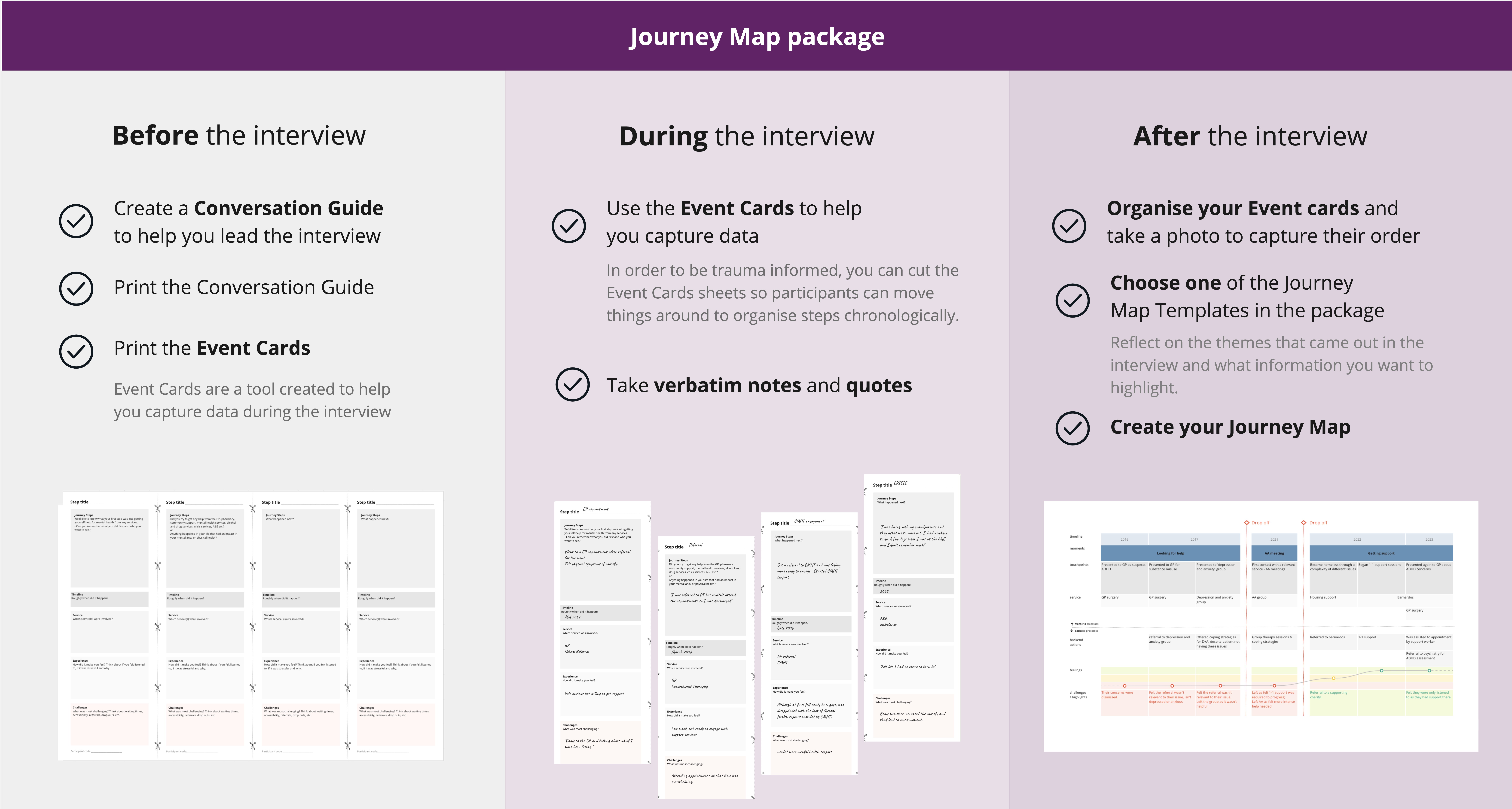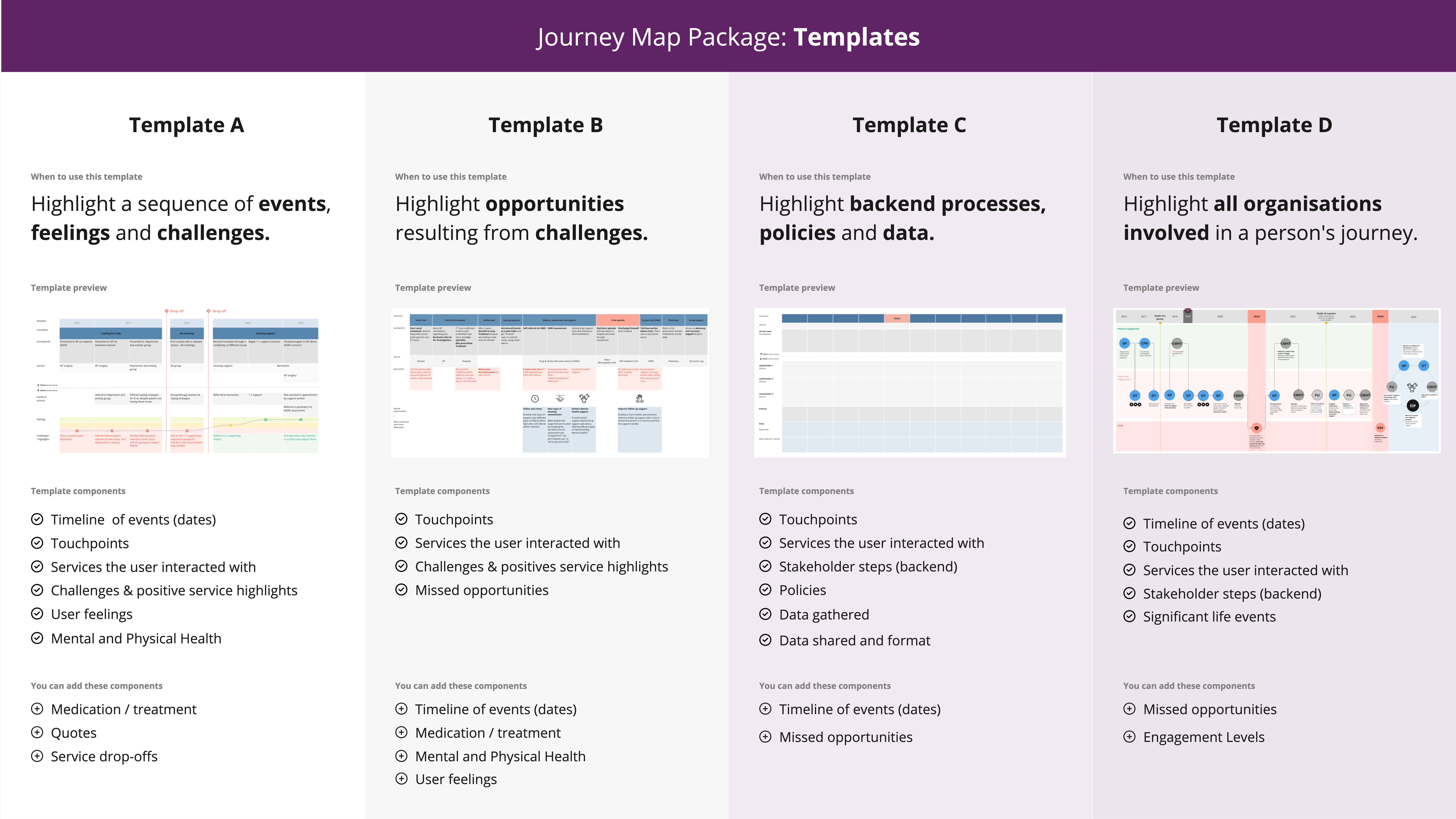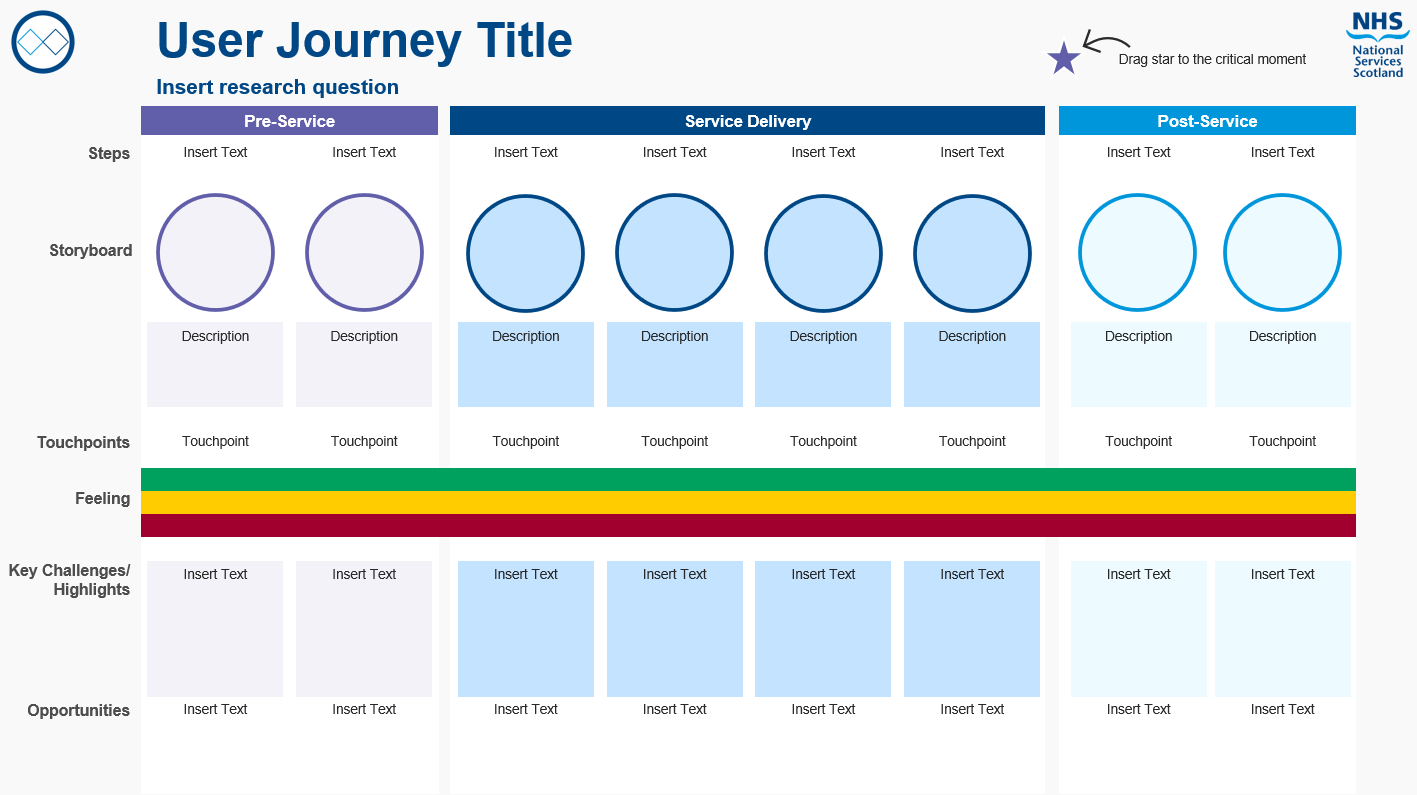Journey mapping helps you understand, record, and share the experience of a person using your service.
It is a powerful tool to visualise complex journeys and is key to understanding users' needs, emotions, challenges, and opportunities.
Why use a journey map?
- Structure conversations with your users: The map tool itself provides a guide for facilitating discussions.
- Show your service as your users experience it: It demonstrates their agenda and the challenges they face in achieving their needs from you.
- Avoid prejudging what you should explore: This approach helps identify problems and opportunities that are important in your users' daily experiences.
- Show challenges and opportunities in the context of the entire experience: It helps you understand the implications of any changes you might make across the full user journey, ensuring you focus on the right changes at the right points.
- Uncover frustrations and workarounds: This process highlights areas ready to be resolved while also identifying things that work well and should be supported. A journey map can reveal opportunities for improvement.
- Collect suggestions for improvement from your users: This allows you to gain direct feedback on how to better serve their needs.
Journey Map package
This reusable package has a series of Journey Map Templates that can be used across NHS Scotland to visualise user's journeys within or across services.
When to use a journey map

Before the interview:
- Create a Conversation Guide to help you lead the interview
- Print the Conversation Guide
- Print the Event Cards
During the interview:
- Use the Event Cards to help you capture data
As it is often difficult for people with lived experience to remember when some things have happened, you can cut the Event Cards sheets so participants can move things around
- Take verbatim notes and quotes
After the interview:
- Organise your Event Cards and take a photo to capture their order
- Choose one of the journey map templates in the package - Reflect on the themes that came out in the interview and what information you want to highlight
- Create your journey map
How to use this tool
There are many ways to approach journey mapping and to visualise a user's journey. We included some templates to get you started, but they are not prescriptive.
It is important to take a moment to think about the purpose of your journey map and what information you'd like to highlight.
Template A
Highlights a sequence of events, feelings and challenges.
Template B
Highlights opportunities resulting from challenges.
Template C
Highlights internal processes, policies and data.
 Download template A
Download template B
Download template C
Download template A
Download template B
Download template C
More templates from the Design Community
 Download NSS template
Download NSS template
